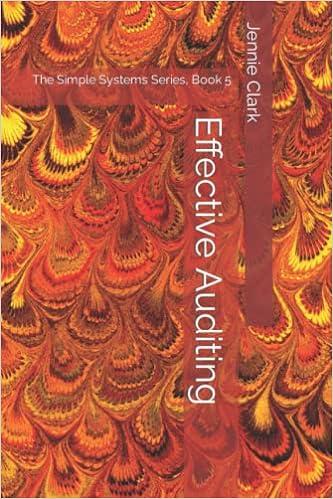Question
We have to use Matlab to do the following assignment. So I need the Matlab code. Also, the screen of both homework pages have been
We have to use Matlab to do the following assignment. So I need the Matlab code. Also, the screen of both homework pages have been attached. We need to use the ecgbn.dat data provided. I can send that.
All help is much appreciated.
Thank you
You are given the recorded ECG data (ecgbn.dat) which is corrupted by 60-Hz interference with its harmonics and has been sampled at 600Hz. a) Using a subplot, plot the signal vs. time and its frequency spectrum up to the Nyquist frequency. Identify the peaks corresponding to the power line noise. b) Design a notch lter to remove 60Hz fundamental frequency and its second and third harmonics. [Hint: use iirnotch() or pei tseng notch() in case you are using Octave] Implement a cascade of the three notch lters that you have designed. Use the built in command tf() to generate the transfer function for your cascaded lter. Plot the magnitude and phase response of the cascaded lter. Apply the cascaded lter to the noisy ECG signal. Plot the signal after eliminating the 60Hz interference, and its fre- quency spectrum. c) Determine the rest of the characteristics of the fillter that you need to implement in order to pass the ECG components only and get rid of the DC drift and lter muscle noise (Table 1). Implement the analog lter. [Hint: use cheby1()] 1 Table 1: Characteristics of the lter. Filter Type chebyshev Order 2nd Bassband ripple 0.5 lower cuto frequency ? [Hint: consider the lowest heart rate as 40 beats per minute] Upper cuto frequency ? [Hint: look for the frequency range for a typical EMG signal] Convert the analog lter to digital using Bilinear transformation. Find the transfer function for your lter. Plot the magnitude and phase response of the lter. Apply the lter to the enhanced ECG signal. Plot the signal after eliminating noises, and its frequency spectrum. d) Detect the heart rate. The exact implementation of the detection algo- rithm is left for you to decide. One suggested option is to use a \peak detector" i.e. the local maxima of the signal, which signify the R wave. 
Step by Step Solution
There are 3 Steps involved in it
Step: 1

Get Instant Access to Expert-Tailored Solutions
See step-by-step solutions with expert insights and AI powered tools for academic success
Step: 2

Step: 3

Ace Your Homework with AI
Get the answers you need in no time with our AI-driven, step-by-step assistance
Get Started


